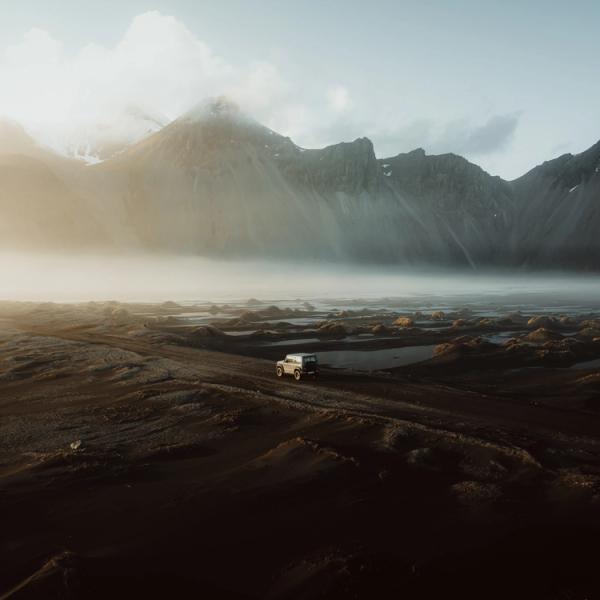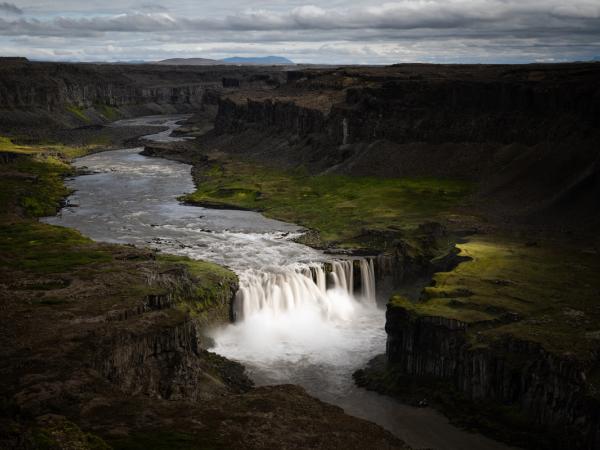
The Ice in Iceland: Vatnajökull National Park
Vatnajökull National Park had been on my travel list for years, and when I finally visited, it exceeded my expectations. This park covers approximately 14% of Iceland and is home to Europe's largest glacier. The landscapes are remarkable, from blue ice caves to powerful waterfalls that make the ground vibrate.
After exploring different parts of the park for several days, I've created this guide to help you plan your trip to this natural wonder.
Key Takeaways
- Vatnajökull is Europe's largest national park, with glaciers, volcanoes, and waterfalls
- The park is open all year, but some areas close in winter
- Summer is good for hiking and boat tours, winter for ice caves and Northern Lights
- You need guides for glacier hiking and ice cave tours
- Bring layers and waterproof clothes in any season—the weather changes quickly
What's Vatnajökull National Park? A Concise Overview
Vatnajökull National Park spans 14,141 square kilometers (5460 square miles) in southeastern Iceland. Its main feature is the Vatnajökull ice cap, Europe's largest glacier by volume. The park became a UNESCO World Heritage site in 2019 because of its unique combination of active volcanoes under massive glaciers.
What makes this place interesting is the ongoing battle between opposing natural forces. Eight volcanoes lie beneath the ice cap, including Grímsvötn, Iceland's most active volcano. When these erupt, they create ice melt floods called jökulhlaups that shape the surrounding land.
The park isn't only glaciers. It includes many ecosystems from wetlands to highland deserts, birch forests to volcanic plains. You can see thundering waterfalls, lagoons with floating icebergs, or walk on ancient ice.
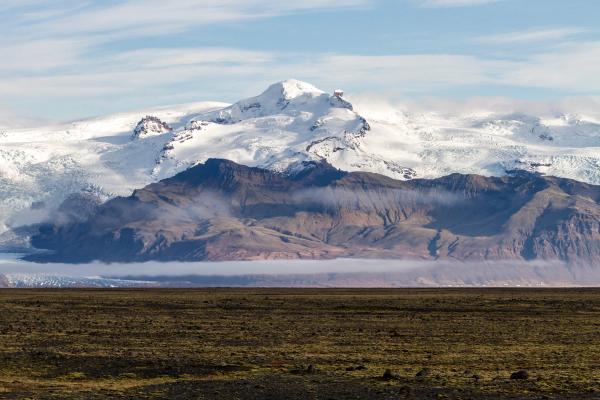
Formation, History & Importance
The story of Vatnajökull began millions of years ago, with tectonic plates colliding and volcanic eruptions forming Iceland. These processes continue today, making the park a living example of natural forces. The ice cap itself remains from the last Ice Age, though it's now shrinking due to warming temperatures.
The park was established in 2008 by combining three protected areas: Skaftafell National Park, Jökulsárgljúfur National Park, and the Vatnajökull glacier. This created one large conservation area to better protect the ecosystem.
Beyond geology, Vatnajökull holds cultural significance for Icelanders. The harsh landscape influenced local stories and survival methods. Norse settlers built farms at Skaftafell in the 10th century, creating a green area at the edge of the ice. Their ability to survive volcanic eruptions, floods, and harsh winters is part of Iceland's identity.
Today, the park serves as a site for studying the climate. Vatnajökull's glaciers have lost 10-15% of their volume since 2000, retreating about 210 meters per year. Scientists track these changes to understand climate behaviours, while the newly exposed land shows how plants and animals colonize areas previously covered in snow.
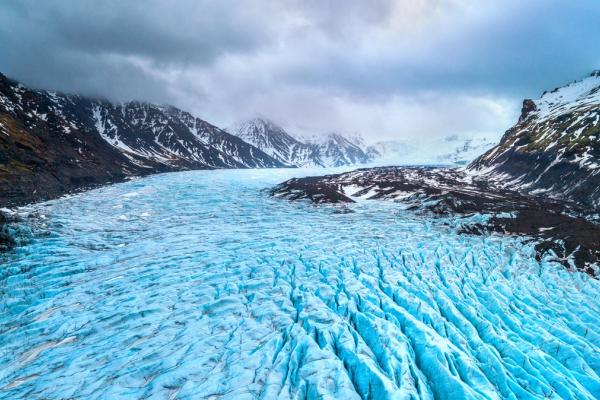
Location & How to Get There
Vatnajökull National Park dominates southeastern Iceland, stretching from the Ring Road (Route 1) in the south to the Highlands in the north. Most people visit the southern attractions, which are located along the Ring Road.
From Reykjavík, it takes approximately 4.5 hours (about 330 km) to drive to Skaftafell, one of the main visitor centers in the area. Jökulsárlón Glacier Lagoon is another 30 minutes beyond that. While driving gives you the most freedom, you have plenty of options:
- Self-drive: Rent a car in Keflavik or Reykjavik. Regular cars work fine for Skaftafell and Jökulsárlón via Route 1, but you need 4x4 vehicles for the Highland areas.
- Public buses: Run between Reykjavík and Skaftafell in summer, but schedules are limited.
- Guided tours: Many companies offer day trips from Reykjavík to Jökulsárlón and Skaftafell, though these are long days (12+ hours).
- Flights: You can fly from Reykjavík to Höfn and rent a car there to save time. Höfn is just an hour from Jökulsárlón.
For the northern section of the park (Jökulsárgljúfur area with Dettifoss waterfall), it's better to stay near Lake Mývatn or Húsavík rather than trying to see the entire park in one trip.
When driving, be ready for all conditions. The Ring Road is paved and well-maintained, but the weather can cause road closures, especially in winter. Always check road conditions at road.is before leaving.
Places to Visit at Vatnajökull National Park
Vatnajökull's size means it contains many different landscapes and natural features. From lagoons filled with ice to powerful waterfalls, each area offers unique experiences. These are the main spots that should be on your list.
Jökulsárlón Glacier Lagoon
This was the highlight of my visit. Jökulsárlón is a large glacial lake where chunks of ice break off the Breiðamerkurjökull glacier and float slowly toward the sea. The icebergs range from white to deep blue, creating a landscape that changes constantly.
I truly recommend taking a boat tour among the icebergs. You can take either an amphibious boat or a smaller Zodiac boat, which gets you closer to the ice.
Across the road from Jökulsárlón is Diamond Beach, where smaller ice pieces from Jökulsarlon wash up on black volcanic sand. The contrast is striking, especially at sunrise or sunset.

Skaftafell
Once a national park in its own right, Skaftafell is now the main southern hub of Vatnajökull National Park. What makes it special is its mild climate and green vegetation: a fertile area surrounded by glaciers and volcanic deserts.
The most popular hike leads to Svartifoss, a waterfall framed by hexagonal basalt columns that inspired the design of Reykjavík's Hallgrímskirkja church. The 1.5 km trail (3 km round trip) is well-maintained and takes about 1-2 hours.
Skaftafell is also the starting point for glacier walks on the nearby outlet glaciers, which is another activity that I really recommend.
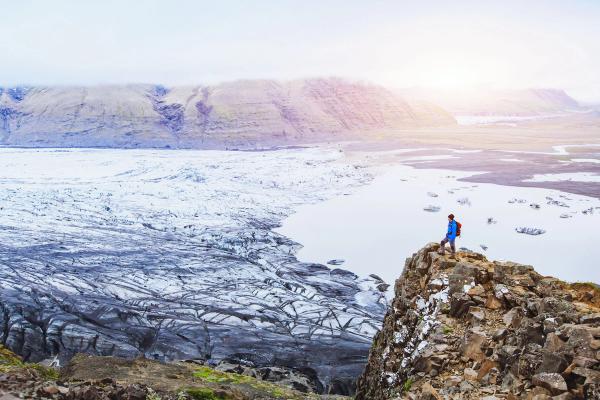
Dettifoss and Jökulsárgljúfur Canyon
In the northern section of the park lies Europe's second most powerful waterfall. Dettifoss drops 44 meters with such force that the ground vibrates beneath your feet. The volume of water is enormous: about 193 cubic meters per second.
You can approach the falls from either the east side (gravel road, more basic) or the west side (paved road, better facilities). Each offers a different view, but both are great. I suggest visiting in the morning when rainbows form in the spray.
The surrounding Jökulsárgljúfur canyon, carved by massive glacial floods, features interesting rock formations and the horseshoe-shaped Ásbyrgi canyon, which Norse mythology says was formed by the hoofprint of Odin's eight-legged horse.
Ice Caves
If you visit in winter (November to March), consider exploring a natural ice cave. These form when summer meltwater carves tunnels beneath the glaciers, which then freeze solid in winter.
The caves show intense blue colors. It’s like stepping inside a blue crystal. Because conditions change each year, and caves can be dangerous without proper equipment, you must visit with a certified guide. Tours cost around $180 per person and typically run from Jökulsárlón or Skaftafell.
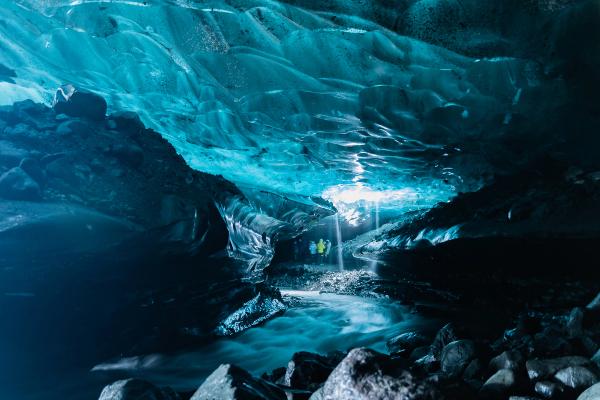
Askja Caldera
For adventurous travelers with 4x4 vehicles, the Highland interior has Askja, a massive volcanic caldera with a milky-blue geothermal lake.
This remote area is only accessible during the summer months (late June to September), when the Highland roads are open. It's a rough journey, but the unusual landscape makes it worth the effort.
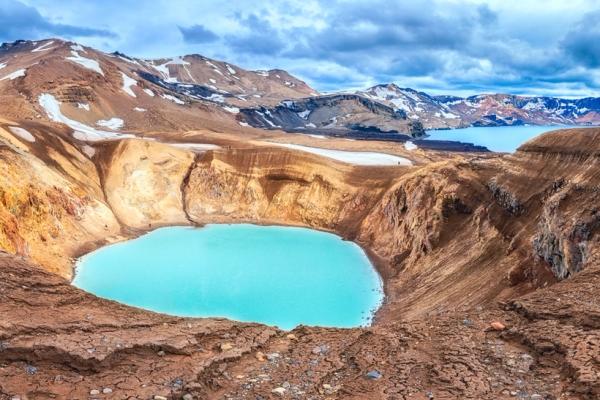
Things to Do at Vatnajökull National Park
Besides sightseeing, Vatnajökull offers many active adventures and unique experiences that create lasting memories.
Glacier Hiking
Putting crampons on your boots and walking on ancient ice is a unique activity. Outlet glaciers, such as Svínafellsjökull and Falljökull, offer accessible terrain for guided glacier hikes.
Tours typically last 2-4 hours and cost $90-$ 150 per person, including all necessary equipment (crampons, ice axes, and helmets). No prior experience is required, but you should have a reasonable level of fitness. Guides are knowledgeable, explaining how glaciers form, move, and create features such as crevasses and icefalls.
Always book with certified guides, as glaciers are dangerous places with hidden crevasses and unstable ice. Never attempt to walk on a glacier by yourself.
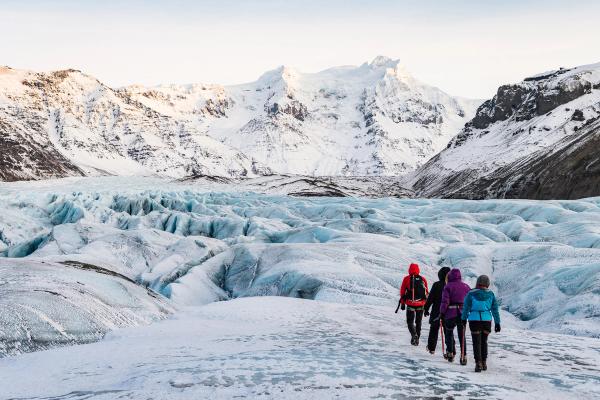
Boat Tours on Jökulsárlón
Seeing icebergs from shore is impressive, but getting out among them is even more impressive. Two types of tours operate on the lagoon:
- Amphibious boat tours: These larger vessels provide a stable, family-friendly experience that lasts approximately 35 minutes. They run from May through October and cost approximately $50-$ 70.
- Zodiac boat tours: These smaller, inflatable boats offer a closer experience to the icebergs and provide a more personal experience. Tours last 30-60 minutes and cost around $130.
I did the Amphibious boat tour, and it was an outstanding experience. You get to see the massive icebergs up close, and even some seals. Our guide was lovely and shared many insights about the glacier, the lagoon, and the surrounding area.
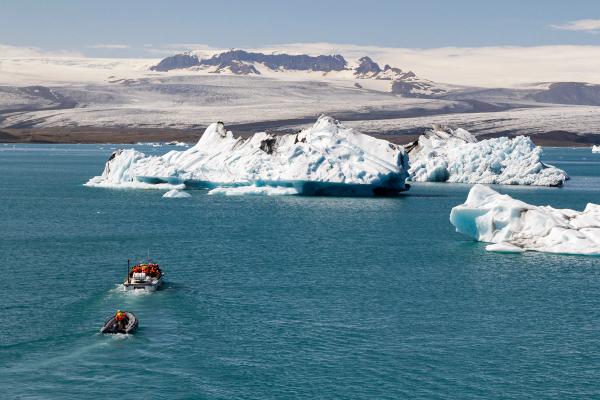
Northern Lights Viewing
In winter (September to March), Vatnajökull offers excellent opportunities to see the Northern Lights, also known as the Aurora Borealis. The lack of light pollution and open spaces creates ideal viewing conditions.
Jökulsárlón is particularly good for aurora watching, with green lights above icebergs reflected in the still lagoon. For the best chance of seeing them, check the aurora forecasts on vedur.is and plan to be outside between 9 PM and 1 AM.
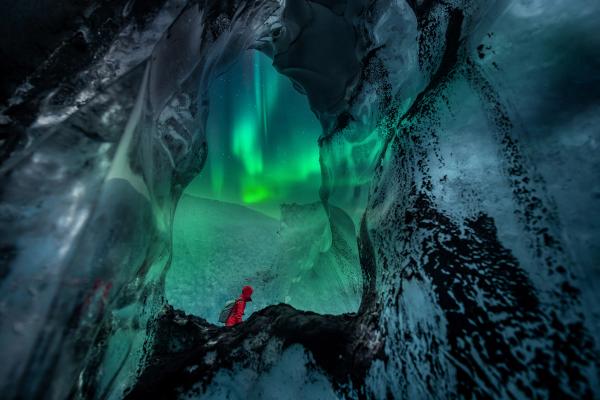
Snowmobiling
If you’re after some adrenaline pump, ride a snowmobile across the vast expanse of Vatnajökull. Tours operate year-round and range from 1-2 hour trips to full-day adventures. Prices start around $250 per person.
No previous experience is needed, but you must have a valid driver's license to operate a snowmobile. Dress in warm clothes, even in summer, as it’s always cold on the glacier.
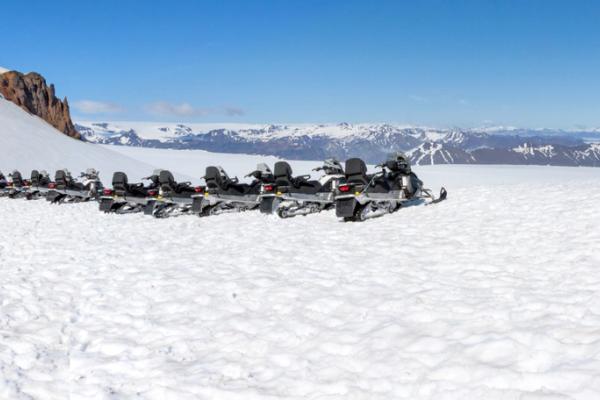
Hiking
Beyond glacier hikes, the park offers many trail options for all abilities:
- Svartifoss Trail: An easy 1.5 km (each way) hike from Skaftafell to the basalt-column waterfall.
- Skaftafellsjökull Trail: A 3.7 km round-trip to a glacier viewpoint.
- Dettifoss Viewpoints: Short walks to various views of Europe's second most powerful waterfall.
- Ásbyrgi Trails: Easy woodland walks in this unique horseshoe-shaped canyon.
For experienced hikers, Vatnajökull offers challenging multi-day routes. The most famous summit is Hvannadalshnúkur (2,110 m), Iceland's highest peak. This demanding 12-16-hour guided trek costs around $500 and requires good fitness and crampon experience.
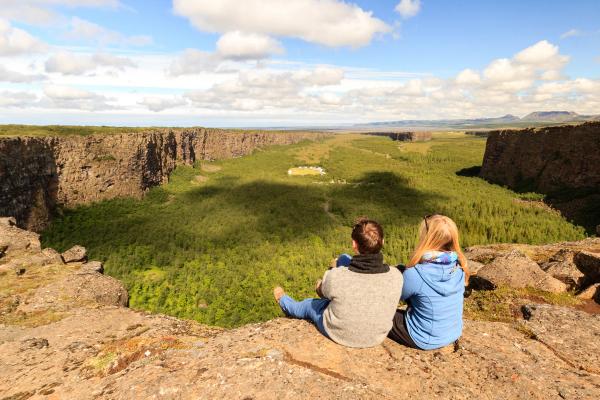
Practical Tips for Visitors
Planning a successful trip to Vatnajökull requires understanding the challenging conditions you might face and preparing accordingly.
Weather
One important thing to understand about Iceland is that the weather can change quickly. You can experience sunshine, rain, sleet, and fog all within an hour at Skaftafell. The park's weather varies by region:
- South (Skaftafell, Jökulsárlón): Relatively mild but very wet. Summer temperatures typically range from 10 °C to 15°C (50°F to 59°F), while winter temperatures hover around 0°C (32°F), sometimes dropping lower.
- North (Jökulsárgljúfur): Slightly drier but colder, especially in winter.
- Highlands: Much colder and windier. Even in summer, temperatures can drop near freezing, particularly at night.
Always check weather forecasts at Vedur.is before heading out, and be prepared to change your plans if conditions worsen.
Best Time to Visit
Each season offers something different:
- Summer (June-August) provides the most access. All roads are open, hiking trails are clear, and daylight lasts up to 24 hours in June thanks to the Midnight Sun. This is when boat tours operate on Jökulsárlón, and highland areas become accessible. The downside is more crowds and higher prices.
- Winter (November-March) offers ice caves and Northern Lights, but limited daylight (4-6 hours in December). Some areas, like Dettifoss, may be closed due to snow. However, Jökulsárlón and Skaftafell remain open, and winter's blue light on the glacier is beautiful.
- Spring (April-May) and Fall (September-October) have fewer tourists while maintaining reasonable access to most sites. These in-between seasons can be ideal if you don't need to visit highland areas.
I visited in late May and found it to be perfect, with fewer tourists, decent weather, and plenty of daylight hours.
What to Bring
Even for a summer visit, pack:
- Waterproof jacket and pants: Essential for staying dry in Iceland's frequent rain or waterfall spray.
- Layers: The temperature can change dramatically. I typically wore a base layer, fleece, and a waterproof shell that I could adjust throughout the day.
- Sturdy hiking boots: Trails can be muddy, and proper ankle support is important for uneven terrain.
- Hat and gloves: Useful even in summer, especially near glaciers.
- Water bottle and snacks: Food options are limited within the park.
- Camera with extra batteries: Cold temperatures drain batteries quickly.
- Sunglasses and sunscreen: The sun can be bright, especially reflecting off ice and water.
For winter visits, add thermal base layers, insulated boots, and a headlamp (essential during the short daylight hours).
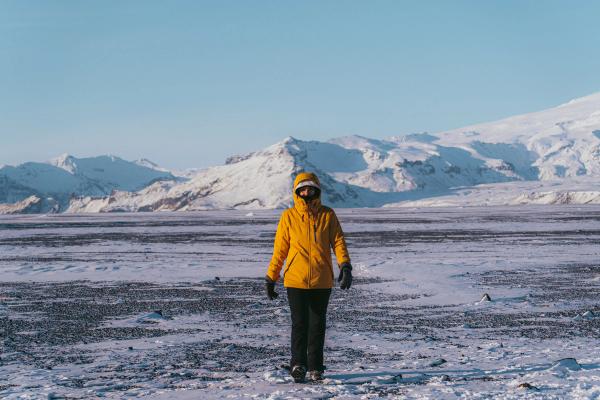
Wildlife and Conservation Efforts at Vatnajökull National Park
While Iceland doesn't have large predators or many mammals, Vatnajökull supports a range of wildlife.
The eastern part of the park is home to reindeer, which were introduced from Norway in the 18th century. Approximately 3,000 roam the region, although they're more commonly seen in winter when they migrate to lower elevations.
Birds are more common, with over 150 species recorded in the park. Jökulsárlón attracts Arctic terns and great skuas, while pink-footed geese gather in wetlands near Skaftafell. If you're lucky, you might spot Iceland's national bird, the gyrfalcon, hunting ptarmigan in the highlands.
Conservation challenges center around climate change, which is dramatically altering the park's glaciers. The Iceland Glaciological Society monitors retreat rates, documenting how rising temperatures are transforming the landscape. New land exposed by retreating ice offers research opportunities for studying ecological succession, which is the study of how plants and animals colonize previously ice-covered areas.
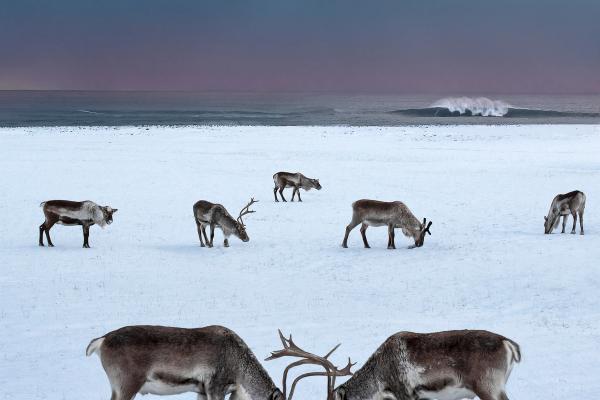
Camping Inside the Park
Staying overnight within Vatnajökull lets you experience the park when day-trippers have left and nature takes over. For the full Vatnajökull experience, consider camping within the park.
The main campgrounds are:
- Skaftafell Campground: Open year-round, this large site offers good facilities including toilets, hot showers, and washing machines. In summer, it can hold hundreds of campers (tents, campervans, and caravans). The fee is around 1,800 ISK (about $15) per adult per night, with children under 17 free. No reservations are needed, but arrive early in peak season as it fills quickly.
- Ásbyrgi Campground: Situated in the northern section of the park, this peaceful site is nestled among birch trees in the horseshoe-shaped Ásbyrgi Canyon. Facilities include toilets and showers.
Both campgrounds are just steps away from hiking trails and natural attractions.
If you're camping in summer, I recommend you bring an eye mask, as the Midnight Sun makes sleeping difficult without one. For winter camping, bring a sleeping bag with strong isolation properties, and prepare for temperatures well below freezing.

Conclusion
Vatnajökull National Park shows Iceland at its most dramatic. The mix of massive glaciers, active volcanoes, and powerful waterfalls creates landscapes that seem like another world. Whether you're hiking beside a glacier, boating among blue icebergs, or standing in the spray of Europe's second most powerful waterfall, the park offers experiences you won't find elsewhere.

